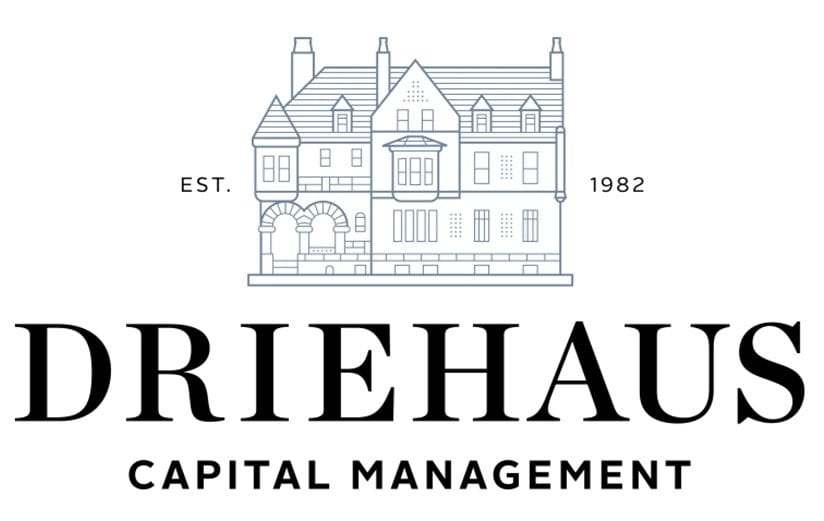

What’s your investment ‘style’? You may have no idea, of course; indeed, you may never have been asked the question. If so, you may well find this article helpful in clarifying your thoughts. We explore the four primary investment styles used by asset managers today, and how each style affects the construction of an investment portfolio. Importantly, a fuller understanding of the various investment styles could help you better align the make-up of your portfolio with your investment needs, now and in the future.
What is an investment ‘style’?
An investment style, often also referred to as an investment strategy or investment philosophy, simply describes the overarching approach taken by the fund manager when assembling a portfolio of assets, and how they’re proposing to meet the fund’s stated investment objectives. Certain asset managers adhere strictly to a particular investment style – and may well state it publicly and overtly in order to position themselves more clearly in the eyes of their investing audience. Such an articulation of the preferred style will almost invariably describe the characteristics that individual assets are intended to manifest, and the criteria that they should fulfill, in order broadly to qualify for inclusion within the portfolio.
Investment styles can be divided, and further sub-divided, in a host of different, and often highly esoteric, ways. The focus of this article however, is the four most fundamental investment styles:
- Value
- Growth
- Quality
- Momentum
Value investing
Value investors aim to acquire shares at a good price, ie those that are perceived to be out of favour and under-priced by the market, and which therefore represent ‘fair value’ on the premise that they will tend to outperform the market over long periods of time.
Typically, with a value approach, asset managers are looking to own unloved companies through a period of positive change, and so are looking for two things: i) a low price to earnings ratio (the share price relative to the earnings per share, known as the ‘P/E’ ratio, and also often referred to as the price multiple or the earnings multiple), and ii) generally a higher dividend yield. The P/E ratio is the most direct way to determine if a stock is cheap as it tells you how much you are paying for each pound of earnings. For instance, a P/E of 10 means you are paying £10 for £1 of the company’s earnings.
Two factors have been largely responsible for driving the prominence and popularity of value investing over the last few decades. First, the phenomenon was firmly established by 2013 Nobel Prize winner Eugene Fama and his partner Kenneth French in developing the revolutionary, but now universally recognised, Fama-French model. Second, value investing has long been the stated approach of Warren Buffett – the ‘Oracle of Omaha’, founder and CEO of Berkshire Hathaway and arguably the world’s most celebrated investor – who learned his trade under the guidance of the late Benjamin Graham: universally regarded as the ‘father of value Investing’, he was a professor of finance at Columbia Business School and author of ‘The Intelligent Investor’ in 1947.

At the core of the approach is the belief that stocks have an intrinsic value, ie a definitive number that can be determined by the use of mathematical techniques such as discounted cash flow analysis. If the calculated intrinsic value is greater than the market value, the stock represents a buying opportunity. Often, a margin of safety is applied – say, 25%. If the stock’s intrinsic value is £10 per share, it would only be bought if its market price was £7.50 or less and it would be sold if and when the market price returns to its ‘fair value’ of £10.
Growth investing
Value investing as a strategy has clearly benefited a great many people – in some cases spectacularly so – but it’s not without its limitations, the most obvious being that it can blind investors to younger businesses with significant potential – they may not yet be generating profits, but can accelerate strongly. For example, since the global financial crisis of 2008, much of the market rally has been driven by growth, not value, stocks: the ‘FAANG’ group of Facebook, Apple, Amazon, Netflix and Google (the last now known as Alphabet). Buffett has indeed conceded that one of his greatest blunders was not to invest in Amazon or Alphabet when they were less well-established businesses.
Rather than focusing on today’s numbers, a growth strategy focuses on businesses that have the greatest potential to expand substantially in both size and importance within their market sectors. An investor will be keen to gain a perspective on the longer-term outlook, preferring to look beyond what might seem an unreasonable valuation based on current earnings (typically reflected in a higher P/E ratio relative to the market) in favour of analysing the business’s prospects some 10 years from now.
As a result, the predominant characteristics of a classic growth stock are high earnings growth rates, high return on equity, high profit margins and low dividend yields – businesses which exhibit these characteristics are often growing rapidly and reinvesting most or all of their earnings in fuelling that growth. Other important facets may well be a large and expanding market opportunity and a durable competitive advantage. Whilst investors are willing to absorb any overvaluation in return for the potential of superior returns, growth stocks which fail can and do fail spectacularly – as ever, high returns and high risk are inevitable bedfellows!
One of the most famous and successful value investors of all time is Peter Lynch, the former manager of the Magellan Fund at the asset manager Fidelity. He took over the fund aged 33, in 1977, and ran it for 13 years, his success allowing him to retire in 1990 at the age 46. The fund earned an annualised return of 29.2% during his tenure, more than twice the return delivered by the S&P 500 index over that time.[1]

Quality investing
This investment style is built on an enduringly simple principle: that quality businesses have a greater likelihood of delivering quality returns. With capital preservation as always paramount, quality investors seek to own businesses that will stand the test of time. What are the pillars on which a definition of quality is built however? Typically, they are an amalgam of soft and hard measures: soft measures are represented by, say, stability of management, uniqueness of the business model, reliable products, or a well-known brand, whilst hard measures would include return on equity, stability of earnings, balance sheet health and most importantly strong free cash flow.
High quality companies are good at generating free cash flow; quality investing therefore focuses on what really matters: the ability of a company to return cash to investors. This makes sense. Investments should be valued in line with the cash they can return to investors. Terry Smith, founder and CEO of asset manager Fundsmith, has sought to circumvent the accusation that quality is in the eye of the beholder by establishing a quality threshold. He sets the quality threshold at a 15% annual return on capital employed, ie for every £1 million invested in a business, at least £150,000 must be generated in cash per year (before tax) … and that’s over the full economic cycle, not just in periods of strong economic growth.[2]

The concept of ‘quality’ first entered the investment world in the fixed interest markets, where bonds were evaluated by specialist ratings firms such as Moody’s and Standard & Poor’s. It was the aforementioned Benjamin Graham who brought it to equity markets in the 1930s when he sought to classify stocks as either ‘Quality’ or ‘Low Quality’. He is credited with the famous observation that the greatest losses result not from buying quality at an excessively high price, but from buying low quality at a price that seems good value.
Quality as a style established its firmest foothold in the aftermath of the dotcom bubble of 2001 when investors were licking the wounds inflicted by a number of high-profile corporate implosions, most notably Enron and WorldCom. These disintegrations prompted investors to pay closer attention to a host of financial resilience and other sustainable competitive advantage factors which – as has happened in so many investment bubbles – were recklessly overlooked.
In short, quality investing requires a ‘tortoise and hare’ mindset: slow and steady wins the race. After all, investing is a marathon, not a sprint.
Momentum investing
Essentially, momentum investing is based on the principle of selling losers and buying winners. Enticing though that might seem, on first examination it runs counter to the well-tested maxim ‘buy low, sell high’. Momentum investing has its staunch advocates however, and so we need to look a little closer.
In reality, momentum investing looks to take advantage of market volatility by establishing short-term positions in stocks that are rising and then exiting those positions as soon as the stocks look to have peaked, ie when they lose ‘momentum’. The funds received from those sales are then directed into new positions. Some trends can persist for some time of course, and it’s possible to benefit by staying with a trend until its ultimate conclusion, however long that might be. Momentum investors that bought into the US stock market in 2009, ie just after the global financial crisis, enjoyed an upward trend until the end of 2018.
Richard Driehaus, the US fund manager and philanthropist, and founder of Driehaus Capital Management in Chicago, is the individual most closely associated with momentum investing. Although not the first to adopt the strategy, he was arguably the most enthusiastic exponent of it. His philosophy was that superior returns could be achieved by buying high and selling higher than by buying undervalued stocks and waiting for the market to re-evaluate them. It was a philosophy that reportedly delivered compound annual returns of 30% for Driehaus Capital Management in the 12 years after it was set up in the 1980s.[3]

It is not for the faint-hearted however, and the drawbacks are many and varied:
- momentum investors trade portfolios in a highly systematic way, based on technical analysis and specific buying and selling points, rather than being driven by emotional responses to share price movements, as so many investors are
- there is an ever-present risk of moving into a position too early, exiting too late, getting distracted and missing vital trends
- high portfolio turnover can become costly over time
- portfolios need to be monitored constantly, probably hourly … and a lot can happen overnight, resulting in significant price movements when markets open the next day
- the strategy generally works better in a rising market because the herd instinct of investors is more prevalent; in a bear market, profit opportunities diminish in line with investor caution.
A game plan for success
It’s rare that we embark on any major task without a degree of strategy and planning. We routinely plan our day at work, how we can afford a new home, financing our children’s education, buying a new car, or even just a week’s holiday.
Oddly, investing seems to be different and we often take the plunge without any real grasp of the investment strategy that’s most likely to align with our current circumstances and future needs. Having the right investment strategy – the one that’s right for you – significantly improves your chances of success.
Hopefully, this article will have demonstrated that ‘how’ you invest is every bit as important – and possibly more so – than ‘what’ you invest in.
Source:
[1] GARP, PEGS and Peter Lynch, The Guru Investor, 2009
[2] Master Investor, 01 August 2019
[3] Investment Gurus: A Road Map to Wealth from the World’s Best Money Managers, Tanous, March 2000